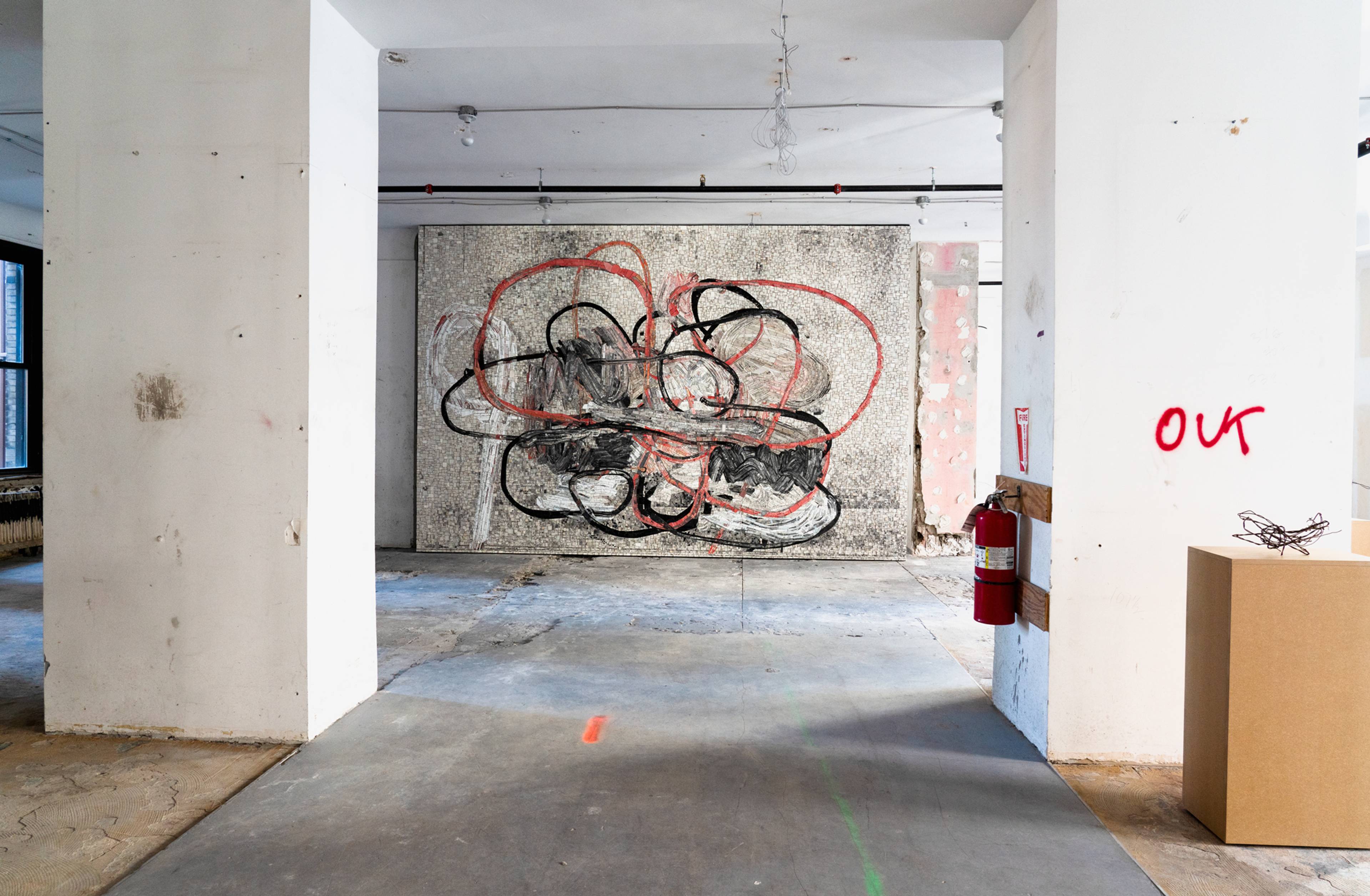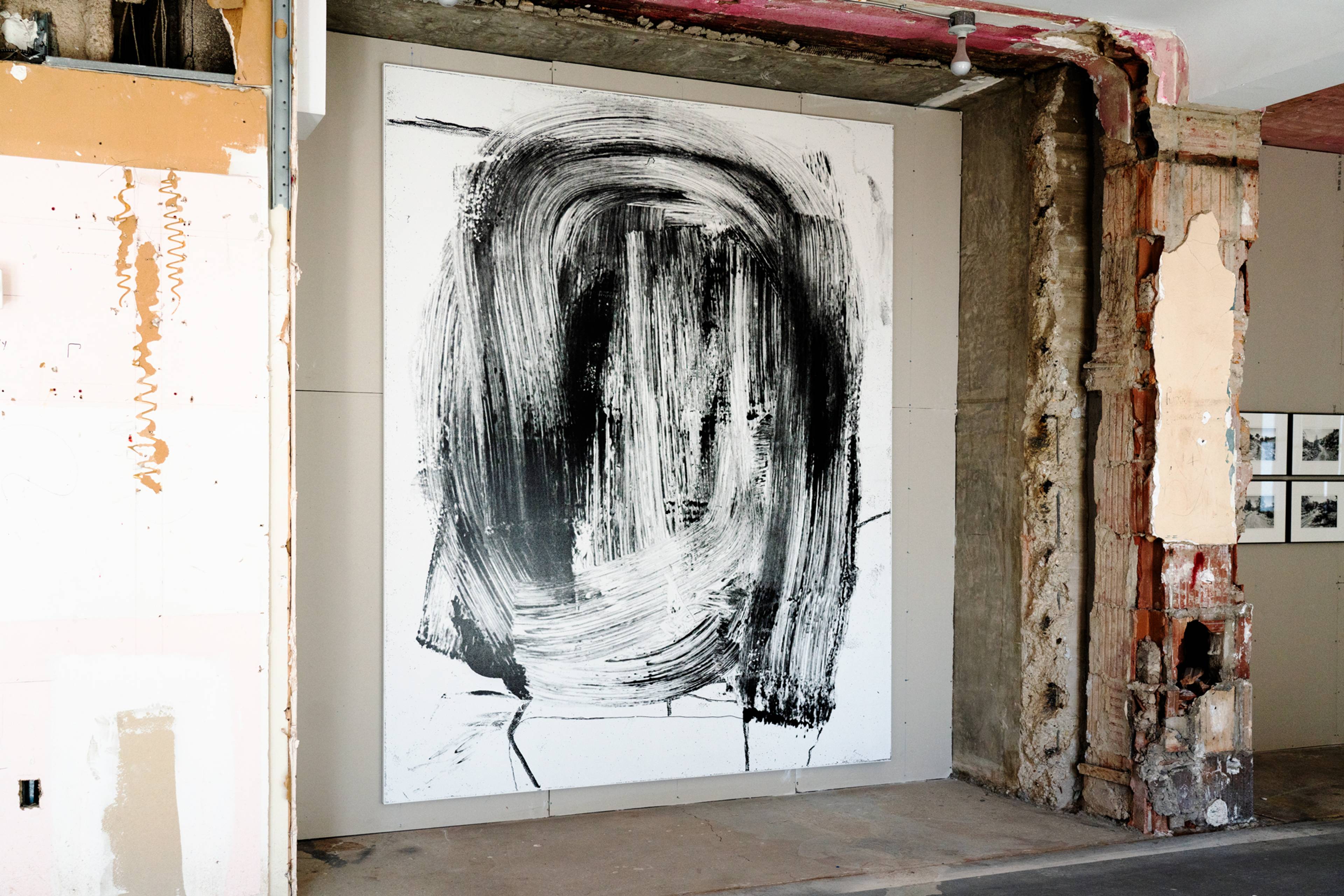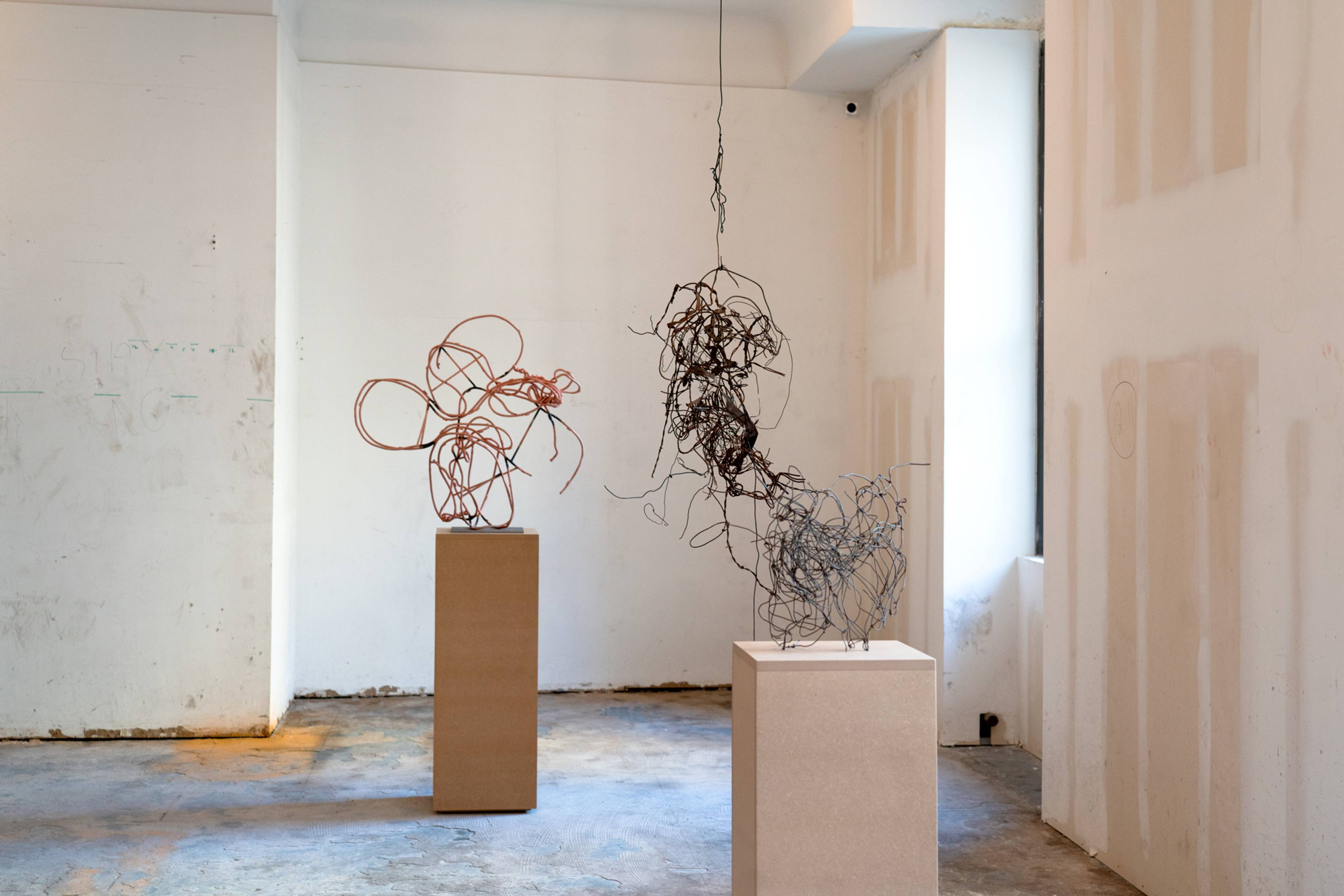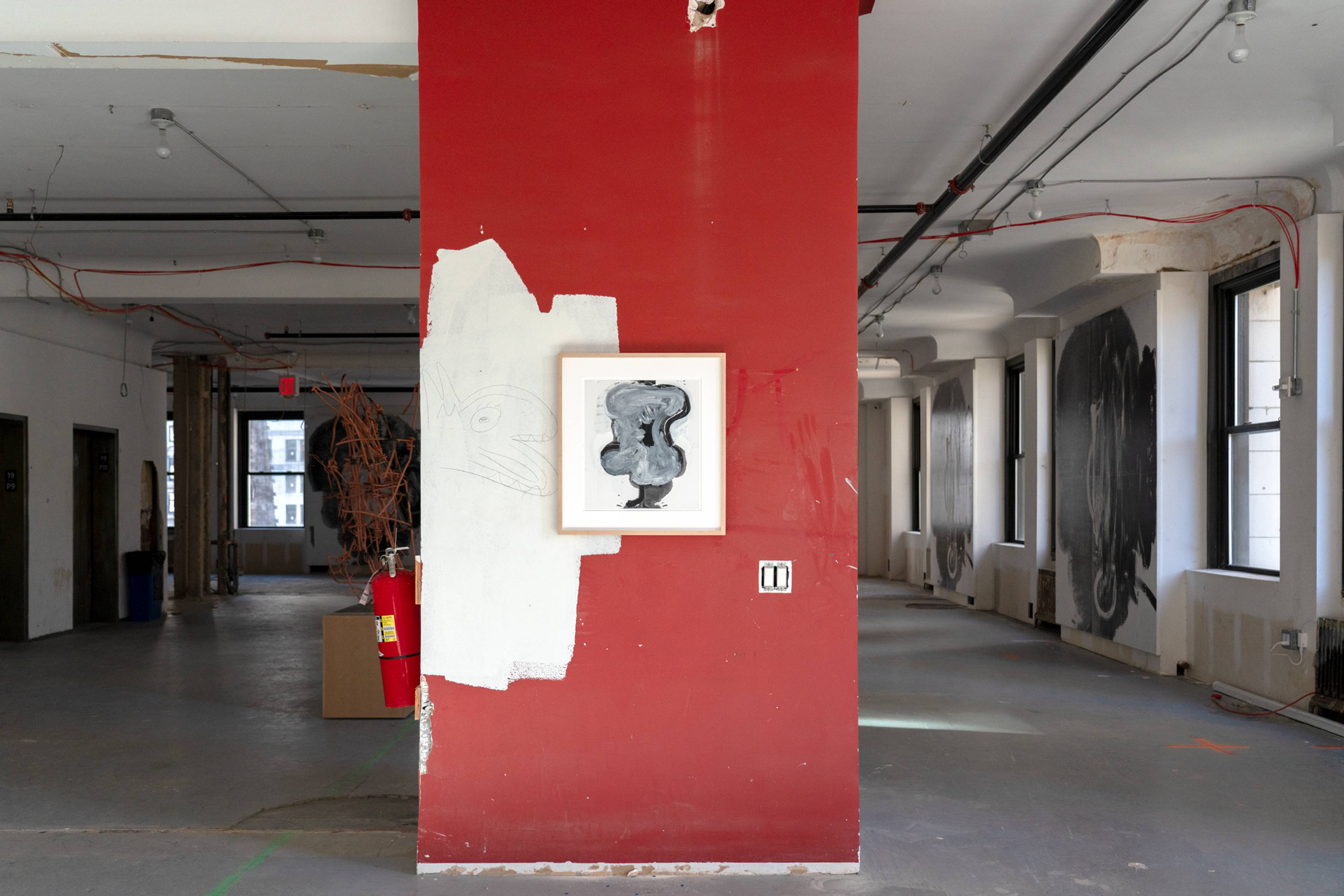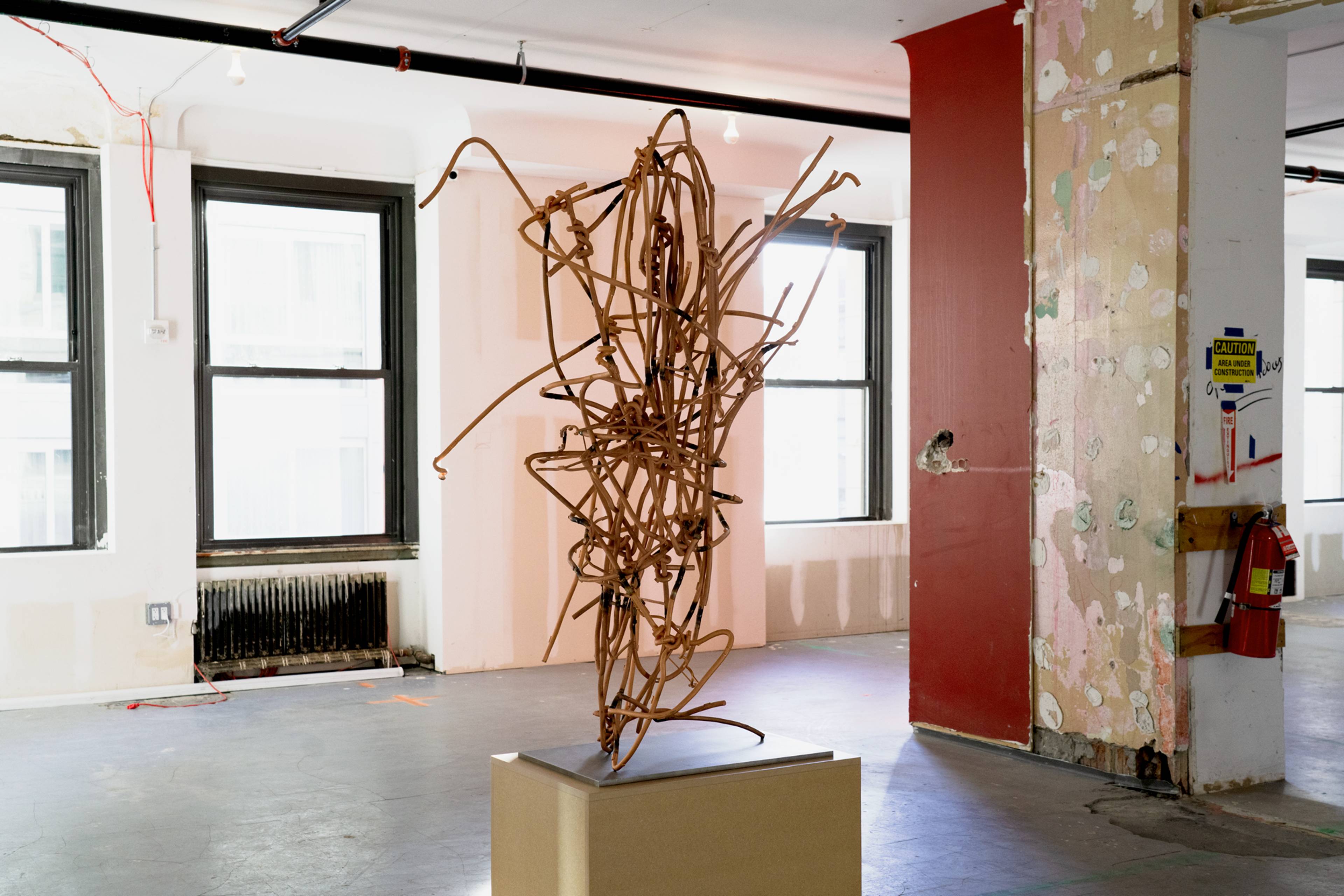Since Covid, there’s been plenty of vacant office space in New York. It’s been called a real-estate apocalypse. People who have been in the city long enough have seen such times before. Christopher Wool arrived here in 1973, when New York was known for high crime, low rents, and all-around grubbiness. The music club CBGB’s had just opened in the East Village, and new art tendencies like those that would soon be featured in exhibitions such as “Pictures” (Artists Space, 1977) and “New Image Painting” (Whitney Museum, 1978) were in the air, but still unnamed. The death of modernism was widely mooted. New York was as yet ungentrified. In 1975, it faced a fiscal crisis that also, at the time, seemed apocalyptic. When a plea to the federal government for a bailout was refused, the Daily News ran the notorious headline, [President] “FORD TO CITY: DROP DEAD.”
More broadly, the 1970s were a decade in monochrome. When you read the newspaper, ink would smudge your fingers. I remember it occurring to me later in the decade, while watching Blondie perform, that the band’s strictly black-and-white attire (Deborah Harry’s red pumps were the exception proving the rule) that this aversion to color probably meant that our sensibilities had been molded by black-and-white TV. Wool started out with an anti-chromatic aesthetic and has remained loyal to it, despite the distinctly Guston-esque pink sometimes mixed in with his grays these days. His work maintains its tight-lipped recalcitrance. And there is something of a post-apocalyptic feel to his recent show “See Stop Run,” self-organized by the artist in collaboration with curator Anne Pontégnie, in 1670 square meters of vacant office space in Manhattan’s Financial District – a decidedly more grandiose avatar of the holes in the city that some may remember, not quite nostalgically and not quite not, from fifty years ago. Once, it was impecunious artists who squatted abandoned buildings; today, the decision to sidestep the gallery/museum system comes from an artist whose market success gives him the means to legally occupy an important piece of commercial real estate.
The show’s ominous mood seems to tie the present to that time when Wool was starting out. The grungy, down-at-heel atmosphere recalls the now almost unimaginable emptiness and abandonment that then seemed to characterize much of the city, a desolation that artists and others found it possible to reclaim and scavenge. Walking through the cavernous, alluringly ravaged space felt like rattling around inside Wool’s dour imagination, seeing things as he sees them and assuming what he assumes. The seventy-plus works on view – paintings, works on paper, photographs, prints, and a massive mosaic – could be taken as an update on the artist’s progress since his 2013 retrospective at New York’s Solomon R. Guggenheim Museum, albeit with a couple of paintings and some photographs from the 1990s. The basic parameters have not changed since then, but he seems to feel even more at ease with his disaffection.
It was a lot to take in, maybe a bit too much. But that was the challenge. Wool situates his art at the edge of formlessness, on the cusp between intentionality and randomness, or what Donald Judd would have called specific and general. Looking at one or a few of his pieces in isolation tends to put the accent on the constructive will at work and to underplay their automatism – not the Surrealist automatism that reveals the traces of the unconscious, but what might be truly undirected processes. Movements of a brush across a surface – even if translated into photographic form and then silkscreened onto canvas or inkjet-printed onto paper, as they often are in Wool’s work – inevitably refer back to the body that wielded the brush and the intentionality it harbors. But tangles of heavy wire displayed on pedestals or suspended from above? In such cases, it takes a greater leap of faith to believe that one is looking at a product of deliberate human intervention – to imagine that one is not observing the urban-rubble equivalent of a scholar’s rock, a found object on which the artist has merely exercised his taste for the “interesting.”
The energetic blankness of the paintings and works on paper finally seems more urgent than the attitude of disinterested contemplation solicited by the sculpture. But are they fighting a forgotten battle? Like the young Frank Stella, Wool seems to be trying to “save” Abstract Expressionism by leeching the expressionism out of it. But rather than doing so by disciplining his brushmarks into serried ranks of stripes, he does the opposite, emptying his unruly paint traces of any connection to an inner meaning. And conjuring the ghost of Guston means conjuring Guston’s intuition that abstract painting had become “too thin,” that “there is something ridiculous and miserly in the myth that we inherit from abstract art,” the myth of purity, of autonomy. Wool is betting that by making abstraction even thinner, even more parsimonious in content, he will demolish the myth of artistic purity from the inside. And I’m not convinced that he is wrong.
___
“See Stop Run”
101 Greenwich Street, New York
14 Mar – 31 Jul 2024


